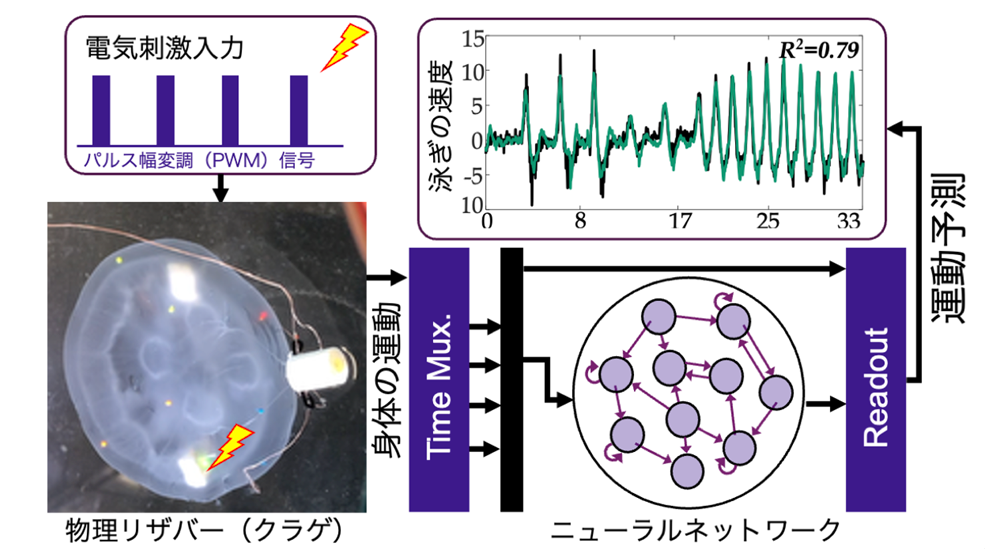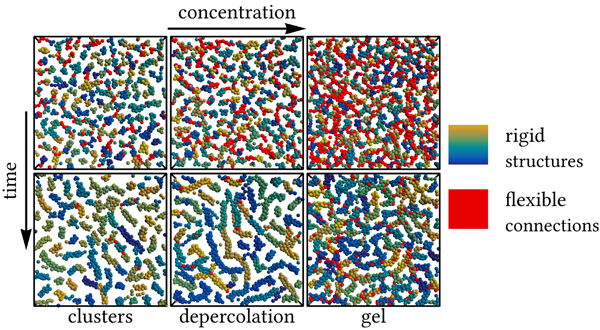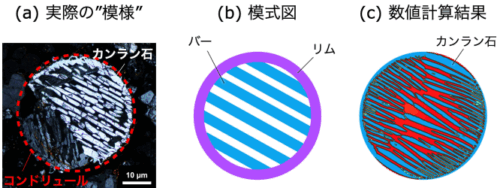2025-05-26 東北大学
 図1. ミズクラゲハイブリッドリザバー計算システムによる運動予測
図1. ミズクラゲハイブリッドリザバー計算システムによる運動予測
<関連情報>
- https://www.tohoku.ac.jp/japanese/2025/05/press20250526-01-jellyfish.html
- https://www.tohoku.ac.jp/japanese/newimg/pressimg/tohokuuniv-press20250526_01_jellyfish.pdf
- https://www.nature.com/articles/s41467-025-59889-7
クラゲの自然発生的サイボーグに自然の具現化された知性を利用する Harnessing natural embodied intelligence for spontaneous jellyfish cyborgs
Dai Owaki,Max Austin,Shuhei Ikeda,Kazuya Okuizumi & Kohei Nakajima
Nature Communications Published:23 May 2025
DOI:https://doi.org/10.1038/s41467-025-59889-7
Abstract
Jellyfish cyborgs present a promising avenue for soft robotic systems, leveraging the natural energy-efficiency and adaptability of biological systems. Here we present an approach for predicting and controlling jellyfish locomotion by harnessing the natural embodied intelligence of these animals. We developed an integrated muscle electrostimulation and 3D motion capture system to quantify both spontaneous and stimulus-induced behaviors in Aurelia coerulea jellyfish. Our key findings include an investigation of self-organized criticality in jellyfish swimming motions and the identification of optimal periods of electro-stimulus input signal (1.5 and 2.0 seconds) for eliciting coherent and predictable swimming behaviors. Furthermore, using Reservoir Computing, a machine learning framework, we successfully predicted future movements of the stimulated jellyfish, which also characterizes how the jellyfish swimming motions are synchronized with the electro-stimulus. Our findings provide a foundation for developing jellyfish cyborgs capable of autonomous navigation and environmental exploration, with potential applications in ocean monitoring and pollution management.



